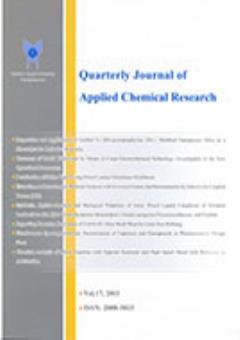-
-
List of Articles
-
Open Access Article
1 - Investigation of the Reduced Graphene Oxide Effect on the Concrete Strength, Impedance and Corrosion Resistance of Rebar Inside
fateme abdi Houdhyar Eimani Kalesar -
Open Access Article
2 - Synthesized of mixed-metal MOF comprising two ligands used as a heterogeneous catalyst for Knoevenagel condensation reacti
علیرضا عباسی Saeideh Tavakoli Mohammad Yousefi Moayad Hosainisadr -
Open Access Article
3 - Cu@KF/Clinoptilolite NPs Promoted Removing Cefixime as Antibiotic and 4-nitrophenole as Pollutant from Aqueous Environment
Rasool Paidar Gagik Badalians Gholikandi Abolghasem Alighardashi Yousef dadban shahamat Hadi Rahimzadeh Barzaki -
Open Access Article
4 - A Simple Polymer-based Co-Precipitation Method for Tuning Magnetic Properties of Cobalt-Doped Nickel Ferrite Nanoparticles
Sharareh Mirzaee -
Open Access Article
5 - Biosynthesis of Silver Nanoparticles using Bacillus subtilis Bacterium Cultured in Corn Steep Liquor and Evaluation of its Antibacterial Activity
Naeimeh Faridi Aghdam Shahram Moradi Dehaghi Sirous Ebrahimi Hamed Hamshehkar -
Open Access Article
6 - Optimized and Scalable Methods for the Synthesis of Lauryl Amine Anti-Cake using Diborane
mohammad javad taghizadeh MAHDI BAHARVAND
-
The rights to this website are owned by the Raimag Press Management System.
Copyright © 2021-2025







